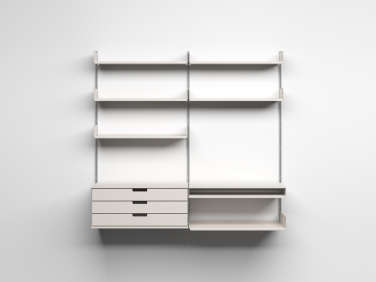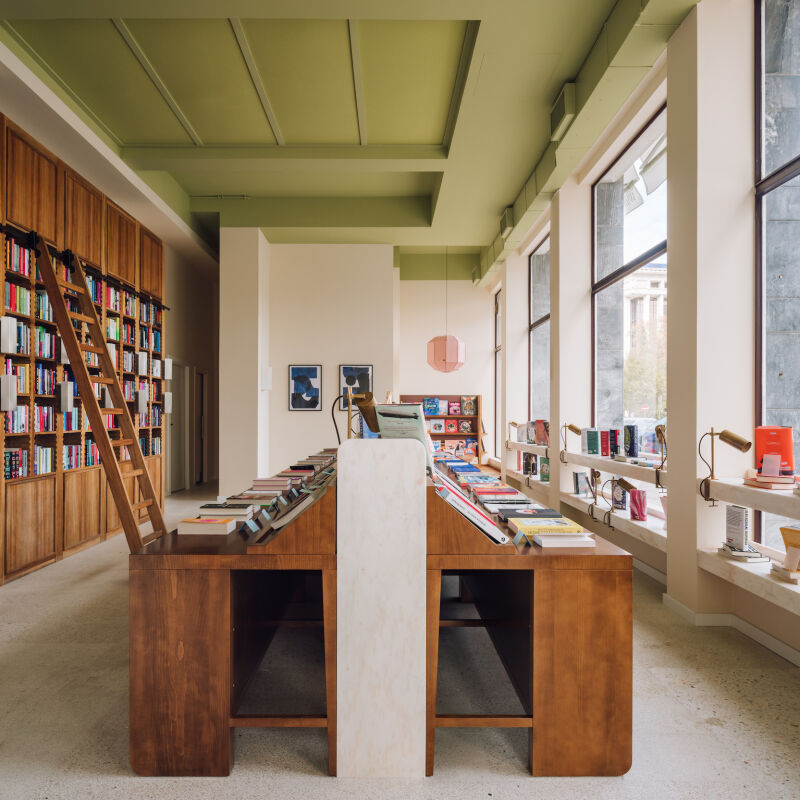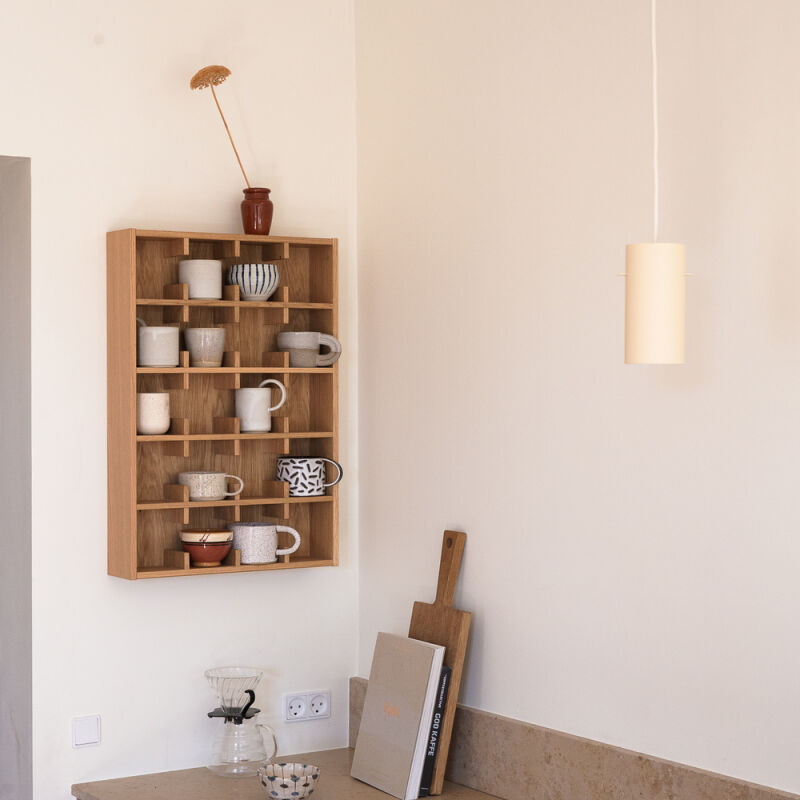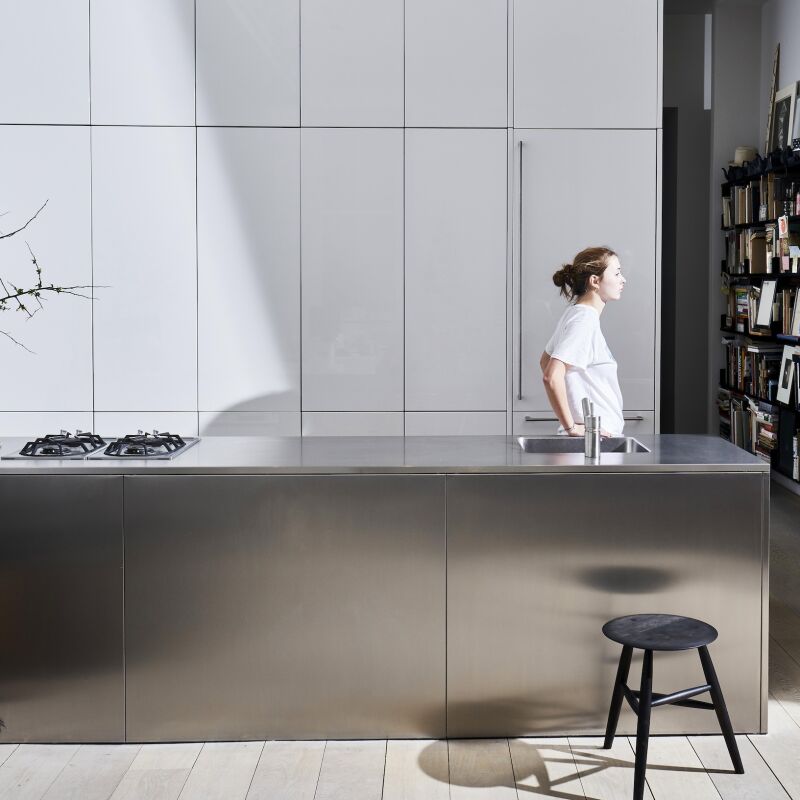During our recent remodel, my husband and I realized a dream we’ve had since we met in architecture school: we purchased our first set of Vitsoe 606 Universal Shelves. Designed by Dieter Rams in 1960, they’re one of the design world’s early alternatives to fast furniture–and continue to represent the ethos of “living better with less that lasts longer.” Rams conceived the 606 Universal Shelving System as an answer to his growing concerns about the limited resources in our natural environment. Comprised of a kit of standard parts that can be configured and reconfigured to suit any situation, the adaptable shelving system was designed for longevity.
So when I met Mark Adams, the managing director of the UK-based company for the last 25 years, at a Vitsoe event in London recently, I was ready to get some behind-the-scenes intel. Adams, whom loyal customers introduce as “the guy who makes the cheapest shelving system you can buy,” walked me through the company’s green initiatives and explained the company’s philosophy: “In the long term, it’s cheaper and better for our ailing planet to make designs that last.”
For the last 25 years, Adams tells me, he’s been working to make the company’s production and manufacturing processes as sustainable as the furniture itself (in fact, Ph.D. candidates at the University of Cambridge and Imperial College use Vitsoe and its manufacturing ecosystem as a case study for their research on industrial sustainability).”Our goal is to generate as little waste as possible,” Adams says. “I think Dieter Rams sums it up quite nicely in this quote, ‘Striving for good design is of social importance as it means, among other things, absolutely avoiding waste.'”
Vitsoe Shelving in Situ

Above: The newly installed Vitsoe shelving system in our London living room. If we ever move, we’ll disassemble it and take it with us (“it’s like Lego for grownups,” one of my sons observed). Vitsoe’s 606 Universal Shelving system is available in various shelf widths and lengths, drawers, desks, and tabletops that can be configured to suit a range of storage needs. Photograph by Kristen Perers.
Above: With cabinets running approximately $1,000 each and the shelves costing between $90 and $100, depending on length, the 606 is an investment. Available in black, off-white, or beech, in the US through the Vitsoe Shop in New York or LA and online at Vitsoe. Photograph by Kristen Perers.
Above: A Vitsoe 606 kitchen (the owners have since moved and repurposed the shelving in the study of their new home). Photograph courtesy of Vitsoe.
Above: An impromptu closet made from the 606 Universal Shelving system. “My own children have had Vitsoe furniture since birth; when they headed to university, they took a small amount of the shelving system from their bedrooms to make student accommodation more habitable,” says Adams. “To them that’s the natural thing to do. And for us, it’s almost cost-free because the investment was made 20+ years ago.” Photograph courtesy of Vitsoe.
Behind the Scenes

Above (L to R): Dieter Rams and Mark Adams. In 2013, Vitsoe received the exclusive worldwide license to all of Dieter Rams’ designs. “To this day, Dieter is constantly reminding me of the importance of single-mindedness in getting something done right,” Adams says. It’s worth noting that Rams was ahead of his time when he drew the attention of designers to an “increasing and irreversible shortage of natural resources” in his prescient Design by Vitsoe speech in 1976. “I imagine our current situation will cause future generations to shudder at the thoughtlessness in the way in which we today fill our homes, our cities and our landscape with a chaos of assorted junk,” he warned. Photograph courtesy of Vitsoe.

Above: “Over the years, we’ve invested in reusable solutions to avoid packaging waste; for instance, our wooden stillages (shown above) for transporting components between suppliers have been in continuous use for 20 years.” Photograph courtesy of Vitsoe.

Above: Cabinets are transported to customers in reusable custom bags that cost £100 each. After delivery, Vitsoe’s installers remove the bags and reuse them for future deliveries. Adams says, “The bonus is that many of our costly investments have repaid quicker than we expected, which always gives us the confidence to invest in similar solutions.” Photograph courtesy of Vitsoe.
Above: “Furniture only stays long-living and relevant if you continue to evolve it,” Adams says. To that end, Vitsoe continues to research sustainable materials and investigate sustainable manufacturing processes. “A furniture system’s ability to be flexible and adapt is just as important as how well it’s made and how long it will last.” Photograph courtesy of Vitsoe.
Interested in learning more about my remodel? See Rehab Diaries: Searching for Storage in Unexpected Places and Sleuthing for Space in My Kitchen. Over on Gardenista in Outbuilding of the Week, a Garage Turned Studio Apartment is an exercise in efficiency.









Have a Question or Comment About This Post?
Join the conversation (1)